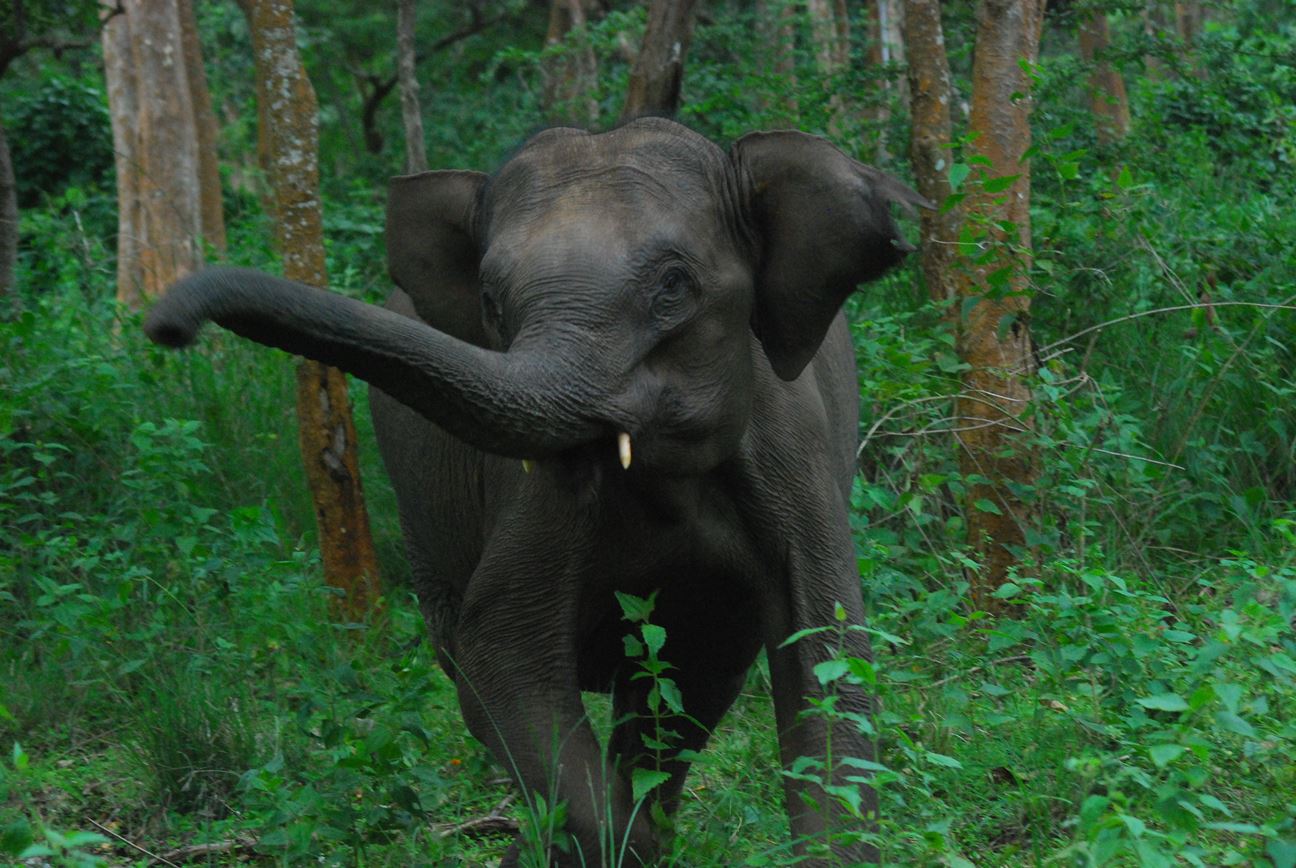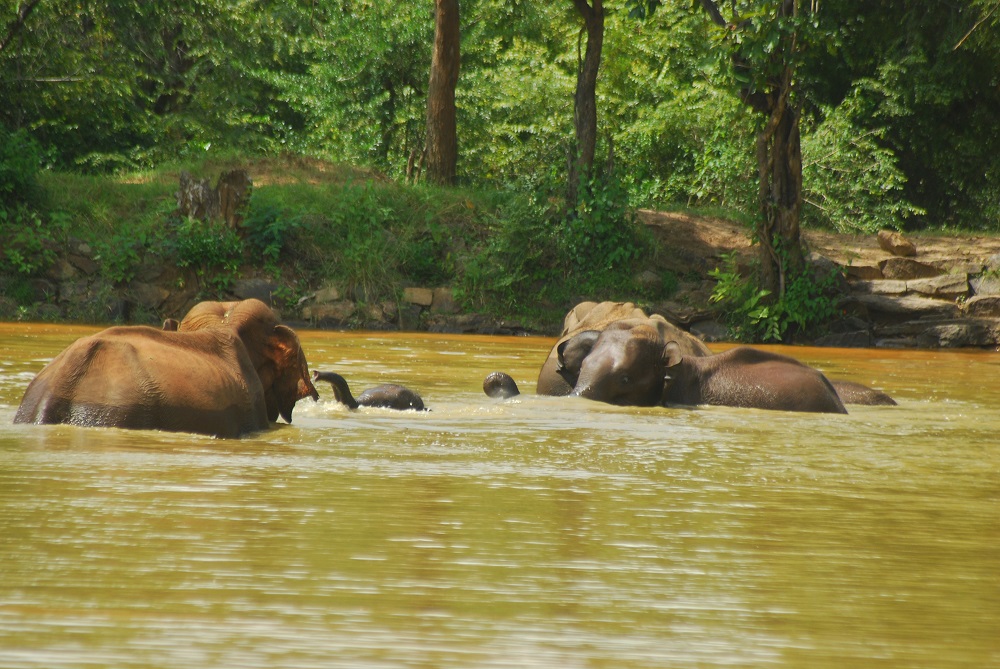The Asian elephant is gentle, graceful, threatening, endangered and threatened — all at once! Here’s some information about this majestic creature.
The enormity of an elephant's appetite becomes most apparent when one hears an elephant's stomach rumble. It sounds like a portion of the hill slopes slid away, and it's difficult to not look up in alarm, wondering which part of the earth is going to cave in! Unlike an elephant’s trumpet (which is far more easily recognizable), the elephant's rumble is something that will always catch you off guard.
India is home to the Asian Elephant: a species that is gentle and graceful and imposing and threatening, as much as it is endangered and threatened. Resident to only parts of the country, the Asian elephant cannot help but hold you bewitched when you encounter a wild one.
Elephants often live in herds, headed by a matriarch: a female that takes charge of the herd and essentially tells the herd what to do. They move regularly from one location to the other, based on weather conditions, changing vegetation and availability of water. Adult males, often referred to as tuskers, separate from the herd and live alone. So a typical elephant sighting would either be a group of young and old elephants moving together, or a single adult male making his way in solitude.

Image Courtesy- Surabhi Ganguly
Being large and kind-faced, with eyes full of wisdom, elephants appear like large cuddly cows -- so why then, would it be a matter of concern to be in the vicinity of a herd? Elephants have personalities that are remarkably complex and emotional: they live a great many years longer than most wild animals and have been known to display love, possessiveness, jealousy, anger, regret and grief. Catching an elephant in the wrong mood is potentially a dangerous situation, for they could charge unpredictably, and be within feet of you in the blink of an eye. Matters are especially dangerous when confronting a herd consisting of young elephants, or males in heat, or when threatening their habitat.
With their need to travel from one location to the other, there is the need for forest patches to be connected to each other, also called elephant corridors. Elephant corridors often clash with the human interest to develop, farm and build road-ways or railway tracks, thus threatening the natural behaviour of these majestic animals, and causing conflict between them and humans. Man-elephant conflict is a matter of great discussion and deliberation between government and environmental organisations and is critical to elephant conservation.
The beauty of an elephant in the wild is difficult to explain enough with words or with pictures. It is a fascinating moment to be in a car or watch tower or at the edge of a water body, and observe a herd of wild elephants in their natural habitat. When they eat, they select only the tastiest bits of grass and leaves and fling the unappealing parts aside in disgust. When they feel threatened, they immediately protect the younger elephants by shielding them and send warning signals for the threat to back off lest they attack. In the heat, they fling dust all over themselves, creating dust clouds in which one can only see an elephant silhouette. When they find a water body, they step in tentatively at first, but it doesn't take them long to swim and roll and play in the water.

Image Courtesy- Surabhi Ganguly
And when they chase, your heart stops beating and you know you've been closer than is allowed. Every moment is worth a capture, and every picture worth sharing, and you can only look forward to the next encounter with a wild elephant!